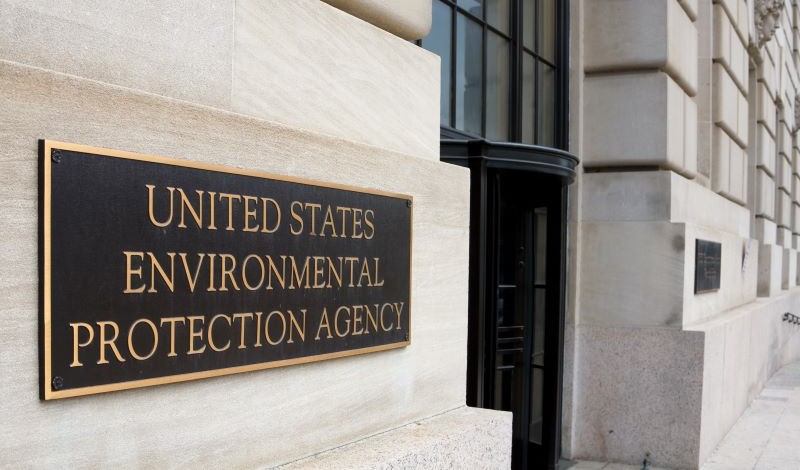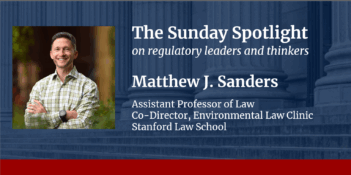
Two recent Supreme Court decisions identify in which court EPA decisions can be challenged.
Not every administrative law decision delivered by the U.S. Supreme Court is of the magnitude of Loper Bright Enterprises v. Raimondo or West Virginia v. Environmental Protection Agency. Even in these tumultuous times, most of what the Court is doing is the familiar business of making marginal refinements in light of lower-court disagreements. Last term’s pair of venue decisions—Environmental Protection Agency v. Calumet Shreveport Refining and Oklahoma v. Environmental Protection Agency—are two examples. Perhaps the Court really has gone completely off the rails, but these cases are not an illustration. Rather, in Calumet and Oklahoma, the Court took an issue that was already unlikely to grab headlines and wrote the most unremarkable opinions possible.
Over 650 federal statutes provide for judicial review of agency action. Typically, these statutes dictate where challenges can be brought. The most common statutory formulation regarding petitions for judicial review in a court of appeals—the Hobbs Act is an example—allows challenges in the circuit where the petitioner resides or in the U.S. Court of Appeals for the D.C. Circuit. But a meaningful minority of statutes requires that particular types of challenges be brought only in the D.C. Circuit. This requirement is especially common in the environmental laws, including the Oil Pollution Act, the Solid Waste Disposal Act, the Safe Drinking Water Act, the Toxic Substances Control Act, and, of course, the Clean Air Act (CAA).
It is difficult to extract a governing principle from these provisions. Rather, they reflect a hodge-podge approach resulting from different Congresses’ weighing of competing considerations.
On the one hand, requiring review in the D.C. Circuit ensures uniformity; indeed, the U.S. Senate report accompanying the original CAA provision invoked the need for “even and consistent national application” of the Act. The D.C. Circuit boasts administrative law expertise. Historically, the D.C. Circuit has set aside agency action at a higher rate than other courts, so a Congress wary about agency authority might hope to ensure more searching scrutiny. And exclusive review prevents litigants from forum-shopping—choosing the most favorable court—views on which often vary depending on the identity of the shopper.
On the other hand, uniformity may be overvalued, and exclusive review forecloses “percolation”—“allowing difficult issues to mature through full consideration by the courts of appeals” rather than having a single lower court resolve them. Alternatively, placing venue in a single court is unnecessary to prevent disuniformity, which can be avoided through the consolidation of all legal challenges to a single agency action. In addition, consider a quasi-federalism argument: Courts outside of the Beltway are closer to the on-the-ground impacts of agency programs, leading to better or more legitimate and widely accepted decisions. The flip side of this argument is that local judges outside Washington may be beholden to powerful local industries. And the D.C. Circuit is slow.
The CAA balances these considerations. First, only the D.C. Circuit reviews certain specific actions of the U.S. Environmental Protection Agency (EPA)—including issuance of National Ambient Air Quality Standards (NAAQS) and other regulations that apply uniformly nationwide—as well as “any other nationally applicable regulations.” Second, other EPA actions, including EPA approval or disapproval of a state implementation plan—a state’s suite of controls designed to achieve the NAAQS—“or any other final action” that “is locally or regionally applicable may be filed only in the appropriate” regional circuit—the circuit within which the challenged decision has its impact. Finally, even an action in the latter category must be brought in the D.C. Circuit “if such action is based on a determination of nationwide scope or effect,” and EPA so finds.
The decisive factor, then, is whether EPA’s decision “applies” nationally or only locally or regionally; venue turns on where the impact of EPA’s decision is felt. A NAAQS applies uniformly nationwide; the approval or disapproval of a state implementation plan has no direct impact outside the state that proposed the Plan. But even a locally applicable action must be challenged in the D.C. Circuit if it rests on a “determination” that has a nationwide effect.
Like any regime that categorizes, line-drawing problems arise, and there is a modest body of lower court caselaw. Calumet and Oklahoma mark the Supreme Court’s first foray into this matter.
In Calumet, which is the more fully reasoned of the two cases, EPA rejected en masse 105 individual petitions from small refineries for waivers of a requirement that gasoline include a minimum amount of ethanol. The denials all rested on two essential propositions. First it read the statutory phrase “disproportionate economic hardship” to refer only to the direct costs of compliance with the renewable fuels mandate. Second, it reached the factual conclusion that refiners can and do pass on relevant costs to consumers—the “pass-through theory.” Refiners sued in multiple circuits EPA responded to each that it had to be brought in the D.C. Circuit. EPA generally prevailed, but the U.S. Court of Appeals for the Fifth Circuit ruled that Calumet’s petition belonged with it.
In a decision written by Justice Clarence Thomas, the Supreme Court held that EPA’s decisions were “locally or regionally applicable.” Because they rested on “a determination of nationwide scope and effect,” however, venue was proper only in the D.C. Circuit.
On the first point, the Court focused on identifying the “action.” Here, there were 105 actions, each of which concerned only one refinery. EPA could not change that reality by lumping them into one pot. On the second point, at the heart of EPA’s 105 actions were its legal conclusion about the meaning of the statute and its pass-through theory: These two propositions were not just but-for causes of its decision—but-for causes abound and do not suffice to make the action one “based on” these determinations—they were its “core basis.” And they were not local or regional in any way: They applied to every refinery in the country.
Justice Neil Gorsuch, joined by Chief Justice John Roberts, dissented. For Justice Gorsuch, that EPA would invoke these propositions to any refinery anywhere was irrelevant; in each, the proposition “applied”—its effect was felt—locally, by the individual refiner.
The justices’ disagreement is unavoidable. The problem is that either reading threatens to prove too much. Every decision under the CAA involves some determinations that are nationally applicable, so the exception threatens to swallow the rule. At the same time, it will always be the case that the immediate impact of any law-applying—as opposed to law-making—decision will be local, so the rule threatens to swallow the exception. The majority’s approach at least attempts to draw a line that avoids these two equally unacceptable outcomes. Justice Gorsuch would have been on much firmer ground had Congress limited exclusive review to challenges to EPA rules and regulations. But instead, it referred to “actions” and “determinations.” These broader terms necessarily include some law-applying decisions. As a textual matter, the majority has the better of the argument.
Oklahoma v. EPA involved a variation of the same setting, and the task was to apply and ultimately distinguish Calumet. In Oklahoma, EPA had disapproved 21 state implementation plans in one fell swoop because they all violated a particular statutory requirement. Multiple challenges ensued, including one brought by Utah and Oklahoma. In an opinion by Justice Thomas, the Court quickly decided that, like the waiver denials in Calumet, these were “locally or regionally applicable” actions. This seems inescapable given Calumet, particularly as state implementation plan disapprovals are explicitly identified as local in the statute. The harder question was whether venue nonetheless lay in the D.C. Circuit because these locally applicable decisions rested on a “determination of nationwide scope or effect.”
EPA pointed to four generally applicable “determinations” that it relied on in determining the insufficiency of each state implementation plan. Showing its determination not to let the exception swallow the rule, the Court dismissed these as “at most heuristics that aided EPA’s analysis rather than primary drivers of the disapprovals.” The denials involved fact-intensive, individualized assessments of the particulars of individual plans. The general principles may have been but-for causes of the disapprovals, but that was exactly what the Court had said—no doubt with an eye on this case—was inadequate in Calumet.
Justice Thomas’s opinions relied on the whole gamut of legal materials from A to B. They focused on text and cite four different dictionaries. More notable is what is absent. Justice Thomas did not ask whether the outcome makes sense or is consistent with congressional policy. None of the considerations mentioned above about the pros and cons of exclusive D.C. Circuit venue appear. And of course, the opinions ignore legislative history.
Most strikingly, the fact that EPA thought review in the D.C. Circuit was required moved the needle not at all. To put a case in category three—locally applicable but based on a nationwide determination—Congress required that EPA explicitly state that its action was based on a determination of national scope or effect. Rather than read that as an indication that EPA’s views matter, Justice Thomas took it as an additional hurdle before the category could apply. Thus, Calumet and Oklahoma were the kind of opinion anticipated by Loper Bright: the Court ignored the agency’s views and searched for the best answer within the four corners of the statute.
One other omission is notable. The question of exclusive venue overlaps with a current hot topic: nationwide injunctions. Exclusive venue results in a de facto nationwide injunction if the agency loses, so it is potentially problematic in at least some of the same ways as nationwide injunctions. On the other hand, exclusive venue precludes rather than encourages the forum-shopping that so many find distressing about nationwide injunctions. Indeed, mandatory litigation in the District of Columbia has been proposed as a remedy to the evil of forum-shopping. But if the nationwide injunction debate had any influence on these two decisions, it was subconscious, or at least unacknowledged. And the opinions provide neither tea leaves nor guidance on that topic.
This essay is part of a series, titled “The Supreme Court’s 2024-2025 Regulatory Term.”




